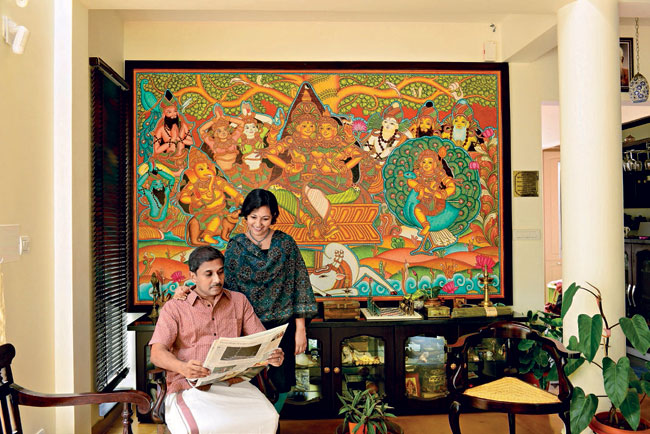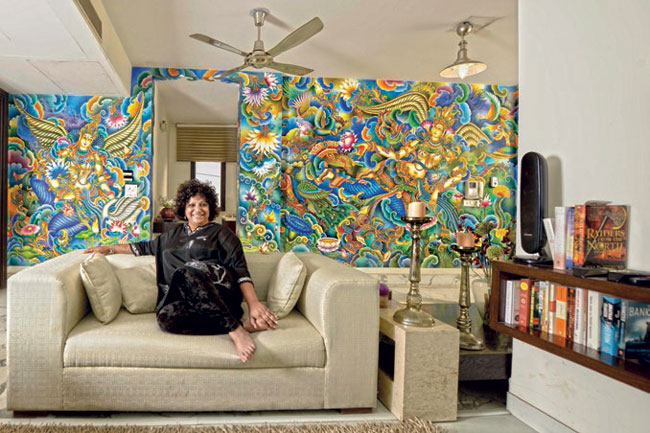Murals: Kerala
(Created page with "[[File: kerala murals 4.jpg|Graphic courtesy: [http://indiatoday.intoday.in/story/kerala-murals-old-temples-malayalis-galleries-museums/1/428110.html ''India Today'']|frame|50...") |
|||
| Line 1: | Line 1: | ||
| − | + | ||
[[File: kerala murals 3.jpg|Graphic courtesy: [http://indiatoday.intoday.in/story/kerala-murals-old-temples-malayalis-galleries-museums/1/428110.html ''India Today'']|frame|500px]] | [[File: kerala murals 3.jpg|Graphic courtesy: [http://indiatoday.intoday.in/story/kerala-murals-old-temples-malayalis-galleries-museums/1/428110.html ''India Today'']|frame|500px]] | ||
[[File: kerala murals 2.jpg|Graphic courtesy: [http://indiatoday.intoday.in/story/kerala-murals-old-temples-malayalis-galleries-museums/1/428110.html ''India Today'']|frame|500px]] | [[File: kerala murals 2.jpg|Graphic courtesy: [http://indiatoday.intoday.in/story/kerala-murals-old-temples-malayalis-galleries-museums/1/428110.html ''India Today'']|frame|500px]] | ||
| Line 14: | Line 14: | ||
[[Category:Arts |K ]] | [[Category:Arts |K ]] | ||
[[Category:Places |K ]] | [[Category:Places |K ]] | ||
| − | |||
| − | |||
=Murals= | =Murals= | ||
[http://indiatoday.intoday.in/story/kerala-murals-old-temples-malayalis-galleries-museums/1/428110.html ''India Today''], April 13, 2015 | [http://indiatoday.intoday.in/story/kerala-murals-old-temples-malayalis-galleries-museums/1/428110.html ''India Today''], April 13, 2015 | ||
Revision as of 20:08, 31 May 2015



This is a collection of articles archived for the excellence of their content. |
Murals
India Today, April 13, 2015
Charmy Harikrishnan
The stylised Kerala murals that decorate the walls of old temples have now moved to modern living rooms, with Malayalis willing to spend a couple of lakhs on them
One does not walk into galleries or museums to glimpse this art. Pretend to be an eager devotee and enter a temple as the first light smears the sky. Slowly, surreptitiously, one circumambulate the shrine. And then one sees the red ochre on the walls, smouldering like embers, under the glow of oil lamps. As the real believers rush past one, as light dances on the wall, one see a dark Garuda swooping down, draped in writhing snakes. One spies a green yakshi looking into a mirror. One does not know where devotion ends and art begins when it comes to the highly stylised murals that decorate and deify the walls of some of the temples and old palaces in Kerala. They are out in the open, stained by lamp soot, sun and monsoon. Yet, they are easily missed, in the pallid light, in the everyday hurry of devotees.
Now a few Malayalis are reclaiming this art as their own. They spend a few lakhs of rupees to have the wide-eyed, big-breasted goddesses in gold and green painted on the walls of living rooms. This is a new domestication of murals. It is nostalgia; it is art; it is heritage; it is auspicious; it is snobbery; it is the appropriation of an old aristocracy-depending on who you are speaking to.
When Jooju Ramakrishnan, a 40-something senior manager at an IT company in Bengaluru, decided to build a house in the city, he wanted to bring back certain lost elements of his home state Kerala. He hauled pillars that once belonged to an ammav-eedu-palatial homes of the consorts of Travancore kings-to Bannerghatta Road. He was also set on a Kerala mural on a wall. "A mural was always an integral part of our house plan," says Ramakrishnan's wife and Montessori teacher Rajani. "This was our attempt to preserve a piece of our culture, something unique to Kerala. We spoke to a mural artist even before we started building our house."
If one wants to paint the mural the traditional way, with natural pigments-white from lime, black from soot, red-ochre from red laterite, yellow-ochre from yellow laterite, blue from indigo and yellow from the gum that oozes out of the bark of eravi or Garcinia morella-you have to do it on a brick wall prepared with lime and sand and treated with several washes of lime and coconut water.
So Rajani left a 7x11 ft space in her living room wall bare, untouched by cement or paint. Then the artist, M. Nalin Babu, who also teaches at the Institute of Mural Painting in Guruvayur, came to stay at the almost-finished house and painted Sivakudumbam in gleaming yellow-ochre. Shiva's left hand typically cradles Parvati's breast, but instead of temple chants, this mural has a new backdrop: the sounds and movements of a modern family. It cost Rs 2 lakh.
You stumble across such murals in inconspicuous houses tucked away in the green bylanes of Kerala-Last Supper becomes indigenous, on a banana leaf, on radiologist Davis Chiramel's wall in Thrissur: an enormous 12x10 ft painting is on business-man J. Devadasan's home in Kannur. Unlike art buyers who acquire paintings as investment, this is unadulterated acquisition, for selling a mural is impractical.
Smita Vijayaratnam's house in Thrissur has two murals, costing Rs 6 lakh, by artist Naveen P. Bhaskar. The 50-year-old, whose husband works for an oil company in Dubai, lives alone, amid the paintings. "I have always loved murals but in the temples one never gets a chance to stare at them. So I thought I would have some of my own," she says. In the living room, golden-hued gopikas frolic with an azure Krishna. On the first floor is a Nritta Ganapathy, his ferocious face tempered to a pleasant but dull expression.
There is an unfortunate insistence to have happy murals at home, dismissing the dynamism unique to ferocious forms, like the Kali in Ettumanoor temple, Kottayam. The Institute of Mural Painting is churning out artists. There will be work, students say with a certainty rarely seen among amateurs. The reason: Murals are creeping up on the walls of restaurants and offices, transposed on sari pallus and miserable shirt pockets, canvases and boards.
The institute, run by the Guruvayur Devaswom, is open only to Hindus and teaches only temple murals, brushing off the extraordinary panels in churches such as St Antony's Forane Church in Ollur that dates to 18th century.
This skewed outlook has not stopped non-Hindus from appropriating the art. Sajida, who lives in Dubai with her businessman husband Abdulrahman, wanted a mural in her new house in Kerala. "I had read about the murals in temples, I wanted to see them but I never could," she says. So she got Babu to paint one. However, she scrubbed away the traditional forms considered integral to murals, as it would have been unIslamic. Instead, she got a forest painted in verdigris green for Rs 1.5 lakh.
Curiously, despite the Kochi-Muziris Biennale, it is hard to find Malayalis spending money on contemporary art. Artist Riyas Komu, co-founder of the biennale, says the obsession of Malayalis for murals is "a diplomatic pretence to highlight their love for tradition". He says, "There is sheer ignorance about the value of contemporary art. People often get murals on their walls as an alternative to what Asian Paints or Berger promises."
Artist A. Ramachandran, who has celebrated murals, agrees: "Malayalis' taste for visual arts has not evolved. First they had Raja Ravi Varma. Now comes this institute. It is supposed to be teaching traditional techniques. I am not so sure. The original murals survived centuries of sunshine and showers. The repainted ones are falling apart in a few years." He says the diversity of colours, techniques and styles of Kerala murals belies what is painted these days: "Earlier mural artists had interactions with Persian and Chinese schools. It resulted in expensive pigments and luminous colours. The current crop of artists doesn't have them."
The art peaked in 14-19th centuries. Now, Kerala mural often gets a practical coat of acrylic. The Delhi and Goa homes of hairstylist Ambika Pillai have 25x9 ft murals in fabulous blues-but in acrylic. The apsaras, painted by artist Prince Thonnakkal, show influences of Tibetan Tankha and cost over Rs 2 lakh. For Pillai, the mural is personal. "After my father's death 12 years ago, my mother took up mural art. That is how I saw the beauty of Kerala murals. Everyone should have one in their homes, in the original sunset colours." Artists now charge by square foot. Thonnakkal's present rate is Rs 2,500 per sq ft.
Malayalis have a very quaint relationship with "heritage". And their celebrations are contagious. In the 1990s, Malayalis, even those who never spent a purple night watching Kathakali, filled their ubiquitous showcases with tacky Kathakali crowns. In the 2000s they went crazy over roof tiles but stuck them on top of concrete roofs. Nalukettu, the inner courtyard of old mansions, now appears in diminutive sizes, shoved away, like tokens, inside houses.
The mural is too expensive to become very common. Yet, the adulation hides a fatal flaw. This revival is not spurred by the genius of an artist, but by the nostalgia of the collector. So often the paintings do not claim new horizons in art. They tend to be flat, without the sheer energy, the grand kinesis that emerges from a lustrous crowd of images that one sees in the 16th century paintings of Panayannurkavu temple near Mannar. The earliest mural painting-in the caves of Thirunanthikkara in Kanyakumari-dates to 8th or 9th century "Often there is more craft than art in today's mural paintings as they tend to be reproductions of images in temples," says historian M.G. Sasibhooshan.
Tanjore and Madhubani artists can also be blamed for copying more, creating less. Artist Dileep Swastik says experimentation is happening but research and reimagination are both needed.
Kerala mural has got its viewer. It is in search of a phenomenal artist.